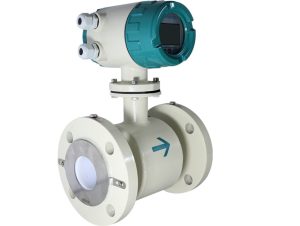
At Kaifeng Oasis Instrument Co., Ltd., we prioritize the accuracy and reliability of our flow measurement solutions. When installing wastewater electromagnetic flowmeters, proper grounding and shielding are crucial to ensure stable and precise measurements, especially in environments with electromagnetic interference.
Key Considerations for Installation:
The measuring electrodes in wastewater electromagnetic flowmeters are exposed to either DC or AC electric fields. If the surrounding environment isn’t effectively shielded from electromagnetic interference, it can severely affect measurement accuracy. Proper grounding of the sensor casing is directly related to the accuracy and stability of the flowmeter’s readings. To avoid interference, the grounding wire must not carry any stray voltages, which means a highly reliable grounding system is essential.
Grounding and Shielding Requirements:
If the connected pipeline is insulated relative to the measured medium, a grounding ring should be used. The material of the grounding ring should be selected based on the corrosive nature of the medium being measured. Typical materials include Stainless Steel 304, Stainless Steel 316, Hastelloy, Titanium and more.
For sensors with a PTFE (polytetrafluoroethylene) lining, a grounding ring is necessary to protect the PTFE flange from damage.
The structure of the wastewater electromagnetic flowmeter mainly consists of the magnetic circuit system, measuring conduit, electrodes, housing, liner, and converter. During installation, attention should be given to the following aspects:
Straight Pipe Sections: For proper installation, a straight pipe section of 10D upstream and 5D downstream is typically required. However, this may vary in the presence of bends, valves, or other pipe fittings.
Grounding and Shielding: The transmitter’s casing should be grounded and connected to the nearest grounding network. Use shielded cables (for remote-type models) as per the manual, and ensure the signal cable is grounded at one end. The short-circuit loop connecting the sensor to the pipeline must also be grounded with a resistance lower than 10 ohms, and should not share the same electrical ground.
Upstream Straight Pipe Section: A straight pipe section of 5D to 10D is recommended upstream of the sensor to ensure accurate readings.
Vibration-Free Environment: The installation location should be free from significant sources of vibration. Reinforcements should be applied to stabilize the pipeline near the sensor.
Avoid Electromagnetic Interference: The flowmeter should not be installed near large transformers, motors, pumps, or any other equipment that generates a strong magnetic field, as this could interfere with the electromagnetic signals.
Full Pipe Installation: The sensor should be installed vertically or horizontally and ensure that the pipeline is completely full of the measured fluid during operation. If the pipeline is not fully filled or there is air release at the outlet, the sensor should be mounted on a siphon pipe to ensure proper measurement.
If there are steady vortex flows within the measurement area, this may affect measurement stability and accuracy. In such cases, increasing the length of the upstream and downstream straight pipe sections, using a flow stabilizer, or reducing the cross-sectional area of the measurement point can help stabilize the flow distribution.
By following these installation guidelines, you can ensure that your wastewater electromagnetic flowmeter provides reliable and precise flow measurements in various challenging environments.
For more information or to receive a customized flowmeter solution, contact Kaifeng Oasis Instrument Co., Ltd. today!

Please contact us for free quotation by form below. We promise the quickest response within 24 hours: